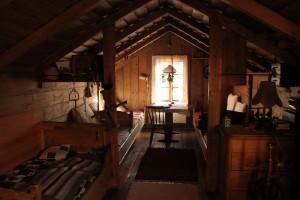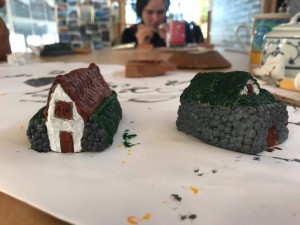Turf houses were the original style of houses for Icelanders up until the last century. The houses were constructed out of wood and turf from the land. The turf was stacked around the surrounding walls of the house and was used to insolate the houses during Iceland’s harsh winters. Usually, turf houses were constructed without plans and as the communities and families grew so did the additional connecting structures.
Spending a night in a turf house was an enriching experience. It was a little hop back in time and the ability to participate in true Icelandic culture. It was like pretending to be Laura Ingalls in her sod house, except with electricity and running water.
As we learned more about the specific house, it made me feel connected to the land and the people who living here before. Hannes, owner and connoisseur of turf houses, lived in the house till he was nine-years-old. His grandmother gave birth to 10 children in one of the beds, which her portrait now proudly hangs above. The house and shed were covered with tools, spinning wheels, mallets, clamps, and hoes. Many of which Hannes had found in the trash and had restored to working condition.
We also got to practice building turf house with clay. Building these miniature replicas taught me a lot about the structure of these turf houses and their connection to the environment. While building turf houses the Icelandic people were deliberate in the placement of windows and house dimensions, this all contributed to one’s ability to stay warm in the winter.
As Iceland moved into the modern world, the days of turf houses are few. Most of the turf houses were torn down and few remain. Hannes explained his passion for turf house restoration which is an intensive process where the house is deconstructed, moved to his property and then rebuilt. Hannes is trying to preserve part of Iceland’s history and on the way hopefully, saving Iceland from ugly, boring houses.
Hailey Nase


PC: Sara Beadle & Ashley Aupperle
